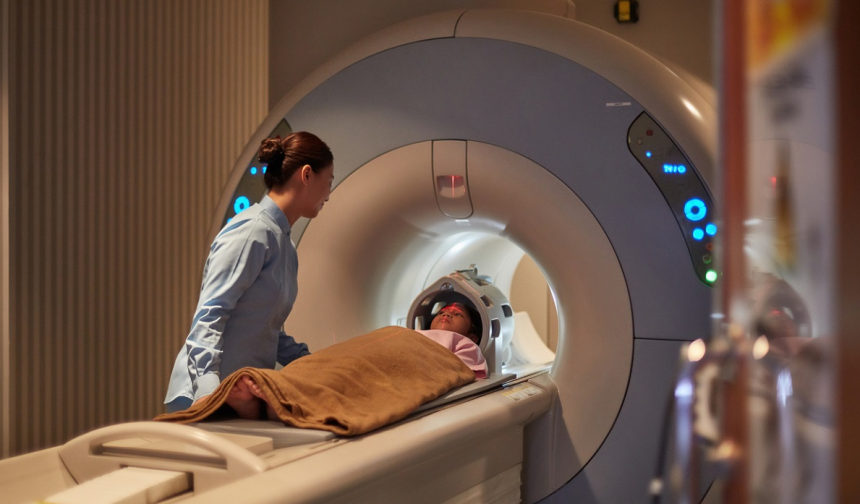TRACK YOUR SCANS
In today’s fast-paced medical world, Computed Tomography (CT) scans have become a cornerstone of modern diagnostic imaging. From the emergency room to cancer follow-ups, CT scans provide swift, precise insights into internal anatomy that once required invasive procedures to detect. Yet, as beneficial as they are a growing body of scientific evidence warns that repeated exposure to CT scans may come at a hidden cost: an increased risk of cancer.
This concern doesn’t aim to downplay the importance of CT imaging in saving lives—it certainly does. But like any powerful medical tool, it must be used judiciously. As patients, caregivers, and healthcare professionals, we all must understand the balance between benefit and risk, especially when it comes to radiation exposure.
Understanding CT Scans
A CT (Computed Tomography) scan combines a series of X-ray images taken from different angles and uses computer processing to create cross-sectional views of bones, blood vessels, and soft tissues. It provides far more detail than regular X-rays and can be crucial for diagnosing conditions like internal injuries, tumors, infections, and vascular diseases.
A standard CT scan delivers doses of ionizing radiation, which can vary widely depending on the type of scan. While one scan may pose minimal risk, repeated scans over time add up, potentially damaging DNA and leading to the development of cancer years down the line.
The Radiation Factor
Radiation from CT scans is a form of ionizing radiation, the same kind linked to atomic bomb exposure, albeit in far smaller doses. According to estimates by the National Cancer Institute (NCI), the effective radiation dose from a CT scan can be between 1 and 10 millisieverts (mSv), depending on the body part being scanned.
To put this into context, the average annual background radiation dose a person receives from natural sources is around 3 mSv. So, one abdominal CT scan, which can deliver around 8-10 mSv, is equivalent to nearly three years of natural background radiation in one go.
While a single scan may not pose significant harm, the concern intensifies when patients undergo multiple scans over time, particularly when the same body part is repeatedly exposed.
What Does the Science Say?
In 2007, a landmark study published in the New England Journal of Medicine estimated that up to 2% of all cancers in the United States might be attributable to CT scan radiation. Since then, multiple studies have supported this concern.
One large-scale study conducted in Australia tracked over 680,000 individuals exposed to CT scans during childhood and adolescence. The findings showed a 24% increase in cancer incidence in those exposed to scans compared to those who weren’t. While the overall absolute risk remains low, the study confirms a real link between radiation exposure and later cancer development.
Another study in the UK involving over 175,000 children found similar results, highlighting that the more CT scans a child had, the greater the risk of leukemia and brain tumors.
Even in adults, the risk compounds with frequency. Repeated exposure—especially in surveillance settings such as cancer follow-ups or chronic illness monitoring—can eventually reach thresholds associated with increased malignancy risk.
Who is Most at Risk?
Children and adolescents are particularly vulnerable to radiation. Their cells divide more rapidly, and their longer life expectancy gives more time for radiation-induced cancers to develop. Pregnant women are another high-risk group, as ionizing radiation can impact fetal development.
But that doesn’t mean adults are immune. Patients with chronic illnesses such as kidney stones, Crohn’s disease, or cancer often undergo repeated scans, increasing cumulative exposure. The elderly, especially those with multiple health conditions, may also be exposed to high doses over a short time span due to multiple diagnostic tests.
Overuse: A Systemic Issue
CT scan overuse is a recognized concern in healthcare. Defensive medicine—a practice where doctors order more tests than necessary to avoid potential legal consequences—is one factor. Patient expectations also play a role; many view advanced imaging as a mark of thorough care, unaware of the radiation risks.
In emergency rooms, CT scans are often ordered to speed up diagnosis. While this is understandable, especially in trauma or stroke settings, some studies have shown that a significant portion of these scans are either not necessary or could have been replaced with lower-radiation options like ultrasound or MRI.
Tracking Your Exposure
As a patient, you have the right to know your medical history, including how many CT scans you’ve undergone and the cumulative dose of radiation received. Unfortunately, this information isn’t always tracked automatically or communicated clearly.
This is why the concept of a “radiation passport” is gaining traction. This simple record—digital or physical—allows patients and doctors to monitor cumulative radiation exposure over time. In the U.S., some hospitals have begun integrating such features into electronic health records (EHRs). Apps are also emerging that allow patients to log scans themselves. Having this history can prevent unnecessary duplicate scans and help physicians make informed decisions about whether a new scan is truly necessary.
Alternatives to CT Scans
While CT scans are invaluable, they aren’t always the only option. Depending on the clinical question, safer alternatives may be available:
- Ultrasound: Uses sound waves and involves no radiation. Ideal for soft tissue exams, fetal imaging, and certain abdominal and pelvic issues.
- MRI (Magnetic Resonance Imaging): Uses magnetic fields and radio waves. It offers excellent soft tissue detail without radiation exposure, though it’s more expensive and not always available.
- Plain X-rays: Deliver lower radiation doses and may be sufficient in some cases like chest infections or bone fractures.
- Watchful Waiting: In some cases, especially in mild or non-urgent conditions, careful observation and follow-up exams can reduce unnecessary imaging.
The key is a thoughtful discussion between patient and doctor. Medical imaging should always be tailored to the individual’s needs, weighing both the urgency of diagnosis and the cumulative risk of exposure.
Role of Healthcare Professionals
Doctors and radiologists play a critical role in managing scan exposure. Following evidence-based imaging guidelines like those from the American College of Radiology (ACR) or the Royal College of Radiologists helps ensure that imaging is justified and appropriate.
Hospitals can also adopt protocols that use the “As Low As Reasonably Achievable” (ALARA) principle, which promotes adjusting scan parameters to deliver the lowest radiation dose needed to achieve diagnostic quality.
Technological advances have also contributed. Newer CT scanners now use iterative reconstruction techniques that reduce radiation doses by up to 60% without compromising image clarity. Yet, these must be coupled with responsible usage.
What Can You Do?
As a patient, taking an active role in your medical care can make a real difference. Here are some steps you can take to minimize unnecessary radiation:
- Keep a Record: Note down every CT scan you’ve had—when, where, and why.
- Ask Questions: Don’t hesitate to ask your doctor if the scan is truly necessary or if there are alternatives.
- Discuss Past Scans: Ensure your doctor is aware of your imaging history to avoid duplicate scans.
- Choose Accredited Facilities: Hospitals and clinics accredited by radiological boards tend to follow stricter radiation safety standards.
- Educate Yourself: Learn about the imaging tests being ordered and understand what they do.
A Delicate Balance
CT scans have transformed modern medicine, often saving lives through quick and accurate diagnosis. However, like any medical intervention, they are not risk-free. Repeated exposure to radiation—even in low doses—adds up over time. When this happens unnecessarily, it becomes a silent threat.
This isn’t a call to avoid CT scans altogether. Rather, it’s a call for awareness, responsibility, and conversation. By tracking your scans, understanding the risks, and working collaboratively with your healthcare provider, you can protect your health today while safeguarding your future.
Conclusion
The message is clear: CT scans are incredibly useful but not without risk. As we become more data-driven and imaging-dependent in medicine, it is crucial to pause and ask: “Is this scan truly necessary?” By staying informed and proactive, patients and physicians can strike the right balance between accurate diagnosis and long-term safety.
In a world where medical technology is rapidly advancing, the human element—awareness, communication, and caution—must remain central. Your health doesn’t just depend on the scans you take but also on the ones you choose not to.
(Author is Radiographic Technologist at GMC Anantnag. Feedback: [email protected]








